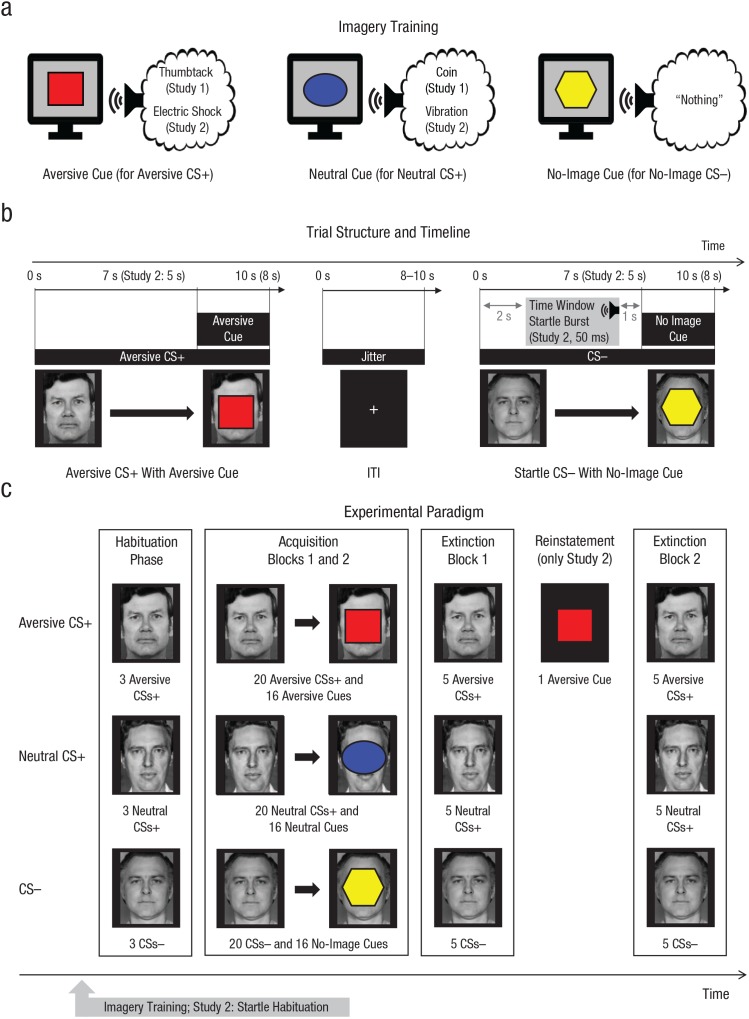Fig. 1.
Schematic depiction of the experimental protocol used in both studies. During imagery training (a), participants were informed of the association between cues (e.g., square, ellipse, hexagon) and imagery scenarios of aversive valence (e.g., stepping on a thumbtack) or neutral valence (e.g., stepping on a coin). In a third condition, participants were instructed not to imagine anything. In Study 2, a circle and a triangle were used instead of the ellipse and hexagon cues, respectively. During the imagery-based differential-conditioning procedure (b), each of three neutral faces (aversive conditioned stimulus, or CS+, neutral CS+, and CS–) was paired with the corresponding cue (aversive cue, neutral cue, no-image cue). All conditioned stimuli (CSs) were presented for 10 s (Study 1) or 8 s (Study 2). CS presentations coterminated with the imagery cue centrally superimposed on the CS for the last 3 s in 80% of the trials. In Study 2, acoustic startle probes were presented during 50% of CS presentations (potential window: 2–4 s after CS onset, i.e., prior to the onset of the imagery cue) and during six intertrial intervals (ITIs). The number and stimuli types used during the habituation, acquisition, and extinction phases are shown in (c). The extinction phase was identical to the acquisition phase, except that the imagery cues were never shown. In Study 2, participants saw the aversive-imagery cue once between two extinction blocks (reinstatement cue).

